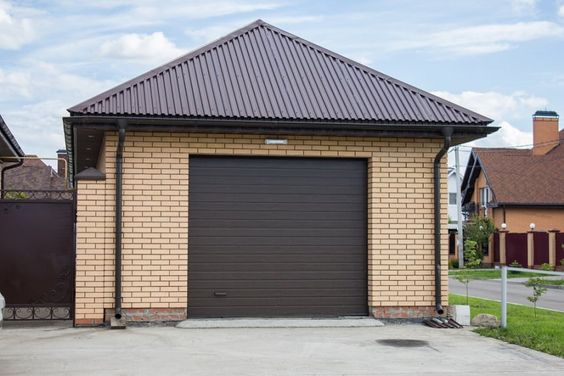As someone who has always been fascinated by the mechanics of everyday objects, I couldn’t help but delve into the science behind overhead garage door springs. These unassuming components hold the key to the smooth operation of garage doors, and understanding the intricate science that governs their function has been a captivating journey.

In this exploration and as per Kokomo Overhead & Garage Doors, I’m excited to share my insights into the world of garage door springs, from their fundamental role to the different types and the scientific principles that make them tick.
The Foundation of Balanced Movement: Unveiling the Role of Garage Door Springs
Every time I operate my overhead garage door, I’m reminded of the ingenious science at play behind its seemingly effortless motion. At the heart of this mechanical marvel are garage door springs, designed to counteract the weight of the door and ensure it can be opened and closed with ease.
Torsion Springs: The Science of Torque and Equilibrium
Torsion springs, often positioned horizontally above the garage door, are the unsung heroes that make lifting heavy doors feel like a breeze. These springs are tightly wound with torque, storing potential energy as they coil. When the door is closed, this energy is harnessed. As the door is opened, the stored energy is released in a controlled manner, helping to lift the door and maintain its balance.
The science behind torsion springs revolves around the principle of torque and rotational force. The coiled spring stores potential energy in the form of torque, which is gradually unleashed to counter the force of gravity pulling down on the door. This delicate interplay ensures that the door remains steady and in equilibrium throughout its movement.
Extension Springs: Stretching for Equilibrium
Extension springs, another type commonly used in garage doors, operate on a different scientific principle. Positioned vertically on both sides of the door, these springs stretch and contract as the door moves. The science here is rooted in Hooke’s law of elasticity, which states that the force needed to stretch or compress a spring is directly proportional to the distance it’s stretched or compressed.
As I observed the extension springs in action, it became clear that the science governing their behavior relies on the concept of elastic deformation. These springs store potential energy when the door is closed and gradually release it as the door opens. This energy assists in lifting the door and maintaining equilibrium throughout its travel.
Calculating Spring Constants: The Precision of Design
The science of garage door springs goes beyond their physical appearance; it’s a meticulous process of calculations and design. Central to this process is determining the spring constants, also known as spring rates. These constants dictate the amount of force required to stretch or compress a spring by a specific distance.
Engineers meticulously calculate these spring constants based on factors such as wire diameter, coil diameter, and the number of active coils in the spring. This scientific approach ensures that the springs provide the exact counterbalancing force needed for the weight of the door. The result is a harmonious interplay of forces that allows the door to operate smoothly and effortlessly.
Choosing the Right Springs: A Delicate Balance
Selecting the appropriate type and size of springs is a decision rooted in science and practicality. The weight of the garage door plays a pivotal role in this choice. Heavier doors require springs with a higher spring constant to provide effective counterbalance, while lighter doors require springs with a lower spring constant to avoid excessive tension.
This decision-making process is a science-driven one. It involves calculating the door’s weight, considering the spring mechanism, and determining the optimal spring constants. The goal is to ensure that the springs are neither understrained nor overstressed, resulting in a balanced and reliable garage door system.
Nurturing the Science: Maintenance for Longevity
To maintain the functionality and longevity of garage door springs, I’ve embraced a science-based approach to regular maintenance. This includes fundamental tasks informed by an understanding of spring mechanics, which contribute to optimal performance and prevent premature wear.
Lubrication, a cornerstone of maintenance, involves applying specialized garage door lubricant to the springs’ coils. This minimizes friction, reduces wear, and ensures a smooth and quiet operation. By doing so, I’m preserving the potential energy stored within the springs, allowing them to continue performing effectively.
Consistent inspections are equally important in preserving the springs’ function. By identifying signs of wear, rust, or deformation, I can take proactive steps to address any issues that may compromise the springs’ integrity. Swift replacements or adjustments are part of the science-driven maintenance routine that keeps my garage door springs in optimal condition.
In Conclusion: The Science Behind Seamless Operation
According from Kokomo Overhead & Garage Doors, as an enthusiast of mechanics and science, delving into the intricacies of overhead garage door springs has been an enlightening experience. The precise science of torque, elasticity, and spring constants all converge to create a technology that transforms the weight of a garage door into a manageable force. Understanding the equilibrium achieved through torsion and extension springs has given me a newfound appreciation for the engineering marvel that enables the effortless opening and closing of overhead garage doors.
The science behind garage door springs is a testament to the fusion of physics and design, resulting in a mechanism that ensures the smooth and reliable operation of garage doors. By grasping the delicate balance that springs provide, I’ve gained insight into the meticulous calculations and principles that make these components an integral part of modern living.
Kokomo Overhead & Garage Doors
1910 Valerie Ct, Kokomo, IN 46902, United States
765-945-2524
